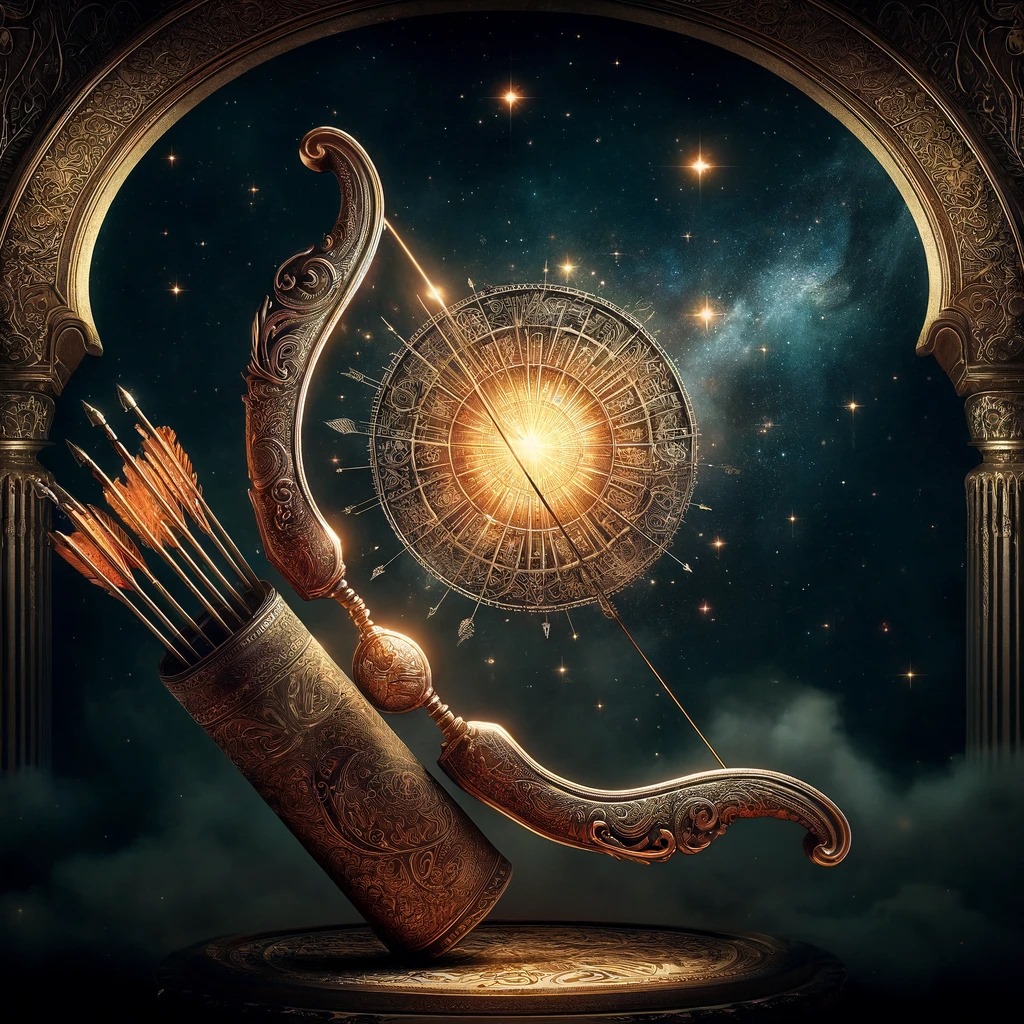Understanding Punarvasu Nakshatra: The Star of Renewal
 May 1, 2024
May 1, 2024 Table of Contents
Introduction
Punarvasu Nakshatra, spanning from 20°00′ Gemini to 3°20′ Cancer, is a constellation that signifies the return of the light and embodies the essence of rejuvenation and restoration. Governed by Jupiter, this Nakshatra is marked by the symbol of a bow and quiver of arrows, representing potential energy and readiness for action. As the birth star of Lord Rama, Punarvasu holds a special place in Vedic astrology, resonating with themes of morality, righteousness, and the triumph of good over evil.
Fundamental Characteristics
- Zodiac Range: 20°00′ Gemini – 3°20′ Cancer
- Ruling Planet: Jupiter, the planet of wisdom and expansion
- Deity: Aditi, the mother of the gods and goddess of abundance
- Symbol: Bow and quiver of arrows, symbolizing potential and readiness
- Gana: Deva (Divine), reflecting its benevolent and higher spiritual qualities
- Quality: Chara (Moveable), indicative of adaptability and dynamism
- Caste: Vaishya (Merchant), representing resourcefulness and prosperity
- Animal Symbol: Female Cat, denoting curiosity and independence
- Bird: Swan, symbolizing grace and beauty
- Tree: Bamboo, known for its resilience and flexibility
- Sounds: Khu, Ghaa, Ing, Chha, which guide the naming of individuals born under this Nakshatra
- Yoga Tara (Fixed Stars): Significant points at 21 and 26 degrees
- Padas (Quarters):
- Pada 1: Aries (Fire)
- Pada 2: Taurus (Earth)
- Pada 3: Gemini (Air)
- Pada 4: Cancer (Water)
Each pada of Punarvasu enhances its influence through the signs, adding layers to its multifaceted nature.

Mythological Background
Aditi, the deity associated with Punarvasu Nakshatra, is a symbol of boundlessness and the mother of the Adityas, including the Vamana avatar of Vishnu. Her stories in the Rig Vedas depict her as the Earth Goddess who fosters all that is bright and sustaining. Aditi’s narrative with her son Vamana highlights themes of generosity and justice, as Vamana, in his giant form, steps over the universe to suppress the pride of Demon King Mahabali, demonstrating the cosmic balance of power.
Lord Rama, another celebrated figure born under Punarvasu, embodies the virtues of duty, honor, and the righteousness of a king. His journey from the prince of Ayodhya to the vanquisher of Ravana and the establishment of a kingdom of justice encapsulates the cycle of trial, triumph, and return that Punarvasu represents.
Influence on Personality and Life
Individuals born under Punarvasu Nakshatra are known for their nurturing nature and their inherent capability to bring ideas to fruition. They are often seen as beacons of hope and reliability, characterized by their intellectual curiosity, optimism, and moral integrity. These individuals thrive in environments that allow them to explore and expand, benefiting from careers in education, counseling, and administration.
Spiritual and Esoteric Significance
Punarvasu Nakshatra is deeply spiritual, with its connection to Aditi encouraging a broadening of the human spirit and a return to essential values. This Nakshatra’s influence is seen in the pursuit of knowledge, the expansion of consciousness, and the ability to adapt and survive through challenges.
Exploring Nakshatras with PocketPandit
PocketPandit, utilizing the innovative technology of PocketSoft, offers users a way to deeply explore Nakshatras like Punarvasu. This platform not only allows astrologers and enthusiasts to calculate complex astrological data but also offers personalized predictions for everyday guidance through pocketpandit.com/ask or the PocketPandit app.
Conclusion
Punarvasu Nakshatra, with its resonating themes of renewal, hope, and moral resurgence, plays a crucial role in the celestial tapestry. It inspires individuals to rise above their trials and tribulations, encouraging a return to their roots and a rediscovery of their true selves. As we conclude our exploration of this auspicious Nakshatra, we are reminded of the endless cycle of endings and new beginnings, the eternal dance of creation and restoration that Punarvasu so beautifully symbolizes.
Up Next: Understanding Pushya Nakshatra: The Star of Nourishment
Explore Our Previous Blog:Understanding Mrigashira Nakshatra: The Quest for Harmony
Connect with PocketPandit Everywhere!
Discover the magic of Vedic Astrology with Pocket Pandit across all your favorite platforms! Get detailed insights, practical remedies, and fascinating content on zodiac signs, nakshatras, yogas, and planetary movements tailored just for you. Whether you enjoy fun reels, quick tips, or in-depth videos, we’ve got something for everyone. Let astrology become a part of your journey,simple, engaging, and full of knowledge.
Join us now:




